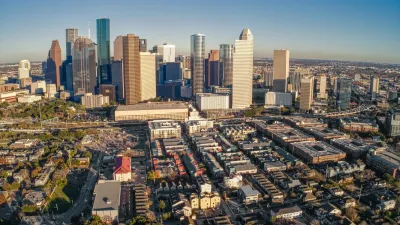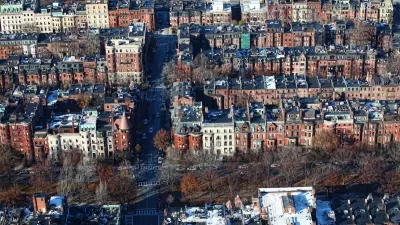Like Japan’s capsule hotels, the ‘podsharing’ housing model offers minimal, shared living space—but can it work as a long-term housing solution?

Dystopian nightmare or clever solution to the housing crisis? That’s the question many are asking about ‘sleeping pods,’ writes Robyn Griggs Lawrence in Smart Cities Dive.
“Sleeping pods were introduced in 2012 by Los Angeles-based co-housing company PodShare as a low-cost alternative for travelers and digital nomads in Los Angeles. They have evolved to become a potential solution to the severe housing shortage gripping California and the rest of the nation.” The concept originated with Japan’s popular capsule hotels and has proliferated at airports around the world. A San Francisco podsharing house charging $1,200 per bed sold out as soon as it opened in what the website 7x7 called “a depressing new low in San Francisco housing.”
As Griggs Lawrence points out, “The pods aren’t without detractors. On Reddit, one user called them ‘the dystopian future,’ and another compared them to living on a warship. Futurism staff writer Victor Tangermann called the pods ‘an extremely expensive prison cell.’”
Nevertheless, the need for affordable rental housing is greater than ever. “In October 2021, 49% of Americans said the availability of affordable housing was a major problem in their local community, according to Pew Research, and the vacancy rate for rental units has fallen from about 10% in 2010 to 5.6% at the end of 2021.”
Jill Pable, a professor and chair of the Department of Interior Architecture and Design at Florida State University, calls the podsharing model “an interesting outcome based on a whole series of new constraints and opportunities that are causing a lot of pain and anguish,” but wonders if “it can provide residents with dignity, empowerment, personal space and privacy” that are essential to human well-being.
FULL STORY: Sleeping pods: coming to a high-rent neighborhood near you?

Alabama: Trump Terminates Settlements for Black Communities Harmed By Raw Sewage
Trump deemed the landmark civil rights agreement “illegal DEI and environmental justice policy.”

Planetizen Federal Action Tracker
A weekly monitor of how Trump’s orders and actions are impacting planners and planning in America.

The 120 Year Old Tiny Home Villages That Sheltered San Francisco’s Earthquake Refugees
More than a century ago, San Francisco mobilized to house thousands of residents displaced by the 1906 earthquake. Could their strategy offer a model for the present?

LA’s Tree Emergency Goes Beyond Vandalism
After a vandal destroyed dozens of downtown LA trees, Mayor Karen Bass vowed to replace them. Days later, she slashed the city’s tree budget.

Sacramento Leads Nation With Bus-Mounted Bike Lane Enforcement Cameras
The city is the first to use its bus-mounted traffic enforcement system to cite drivers who park or drive in bike lanes.

Seattle Voters Approve Social Housing Referendum
Voters approved a corporate tax to fund the city’s housing authority despite an opposition campaign funded by Amazon and Microsoft.
Urban Design for Planners 1: Software Tools
This six-course series explores essential urban design concepts using open source software and equips planners with the tools they need to participate fully in the urban design process.
Planning for Universal Design
Learn the tools for implementing Universal Design in planning regulations.
Ada County Highway District
Clanton & Associates, Inc.
Jessamine County Fiscal Court
Institute for Housing and Urban Development Studies (IHS)
City of Grandview
Harvard GSD Executive Education
Toledo-Lucas County Plan Commissions
Salt Lake City
NYU Wagner Graduate School of Public Service





























